#Southeastern Michigan
Text
I normally try to avoid getting all "real life" on Tumblr, but also wanted to signal boost this (enough that I'm about to Blaze this):
The University of Michigan Gilbert and Sullivan Society (UMGASS) will be holding auditions for the Fall Semester's production of Ruddigore on September 11th-13th, 2023.
If you live in Southeastern MI, and like to act and sing (and possibly dance!) then please check out more information about the show and the audition process here:
Ensemble members are only required two nights a week for most of the rehearsal process, so it's not a big commitment.
ALSO: they are looking for people to direct and music-direct their next show, Iolanthe, which will be produced from Jan-April of 2024.
More info on how to get involved as a prod-staff member here:

#UMGASS#operetta audition opportunity#Ann Arbor MI theater#MI Theater#MI theatre#plays in MI#acting opportunity#michigan theater#auditions#acting audition#singing audition#please people - come out and audition#longshot posts#southeastern MI#southeast michigan#Ann Arbor#Ann Arbor Auditions#Ann Arbor Play#Ann Arbor Acting Opportunity#ypsilanti#saline#ypsilanti theater#milan theater#Should be using -area suffix for those#but yanno what?#I'm not gonna#sorry not sorry
12 notes
·
View notes
Text

Babyface Ray made a surprise heartfelt appearance at the Boys & Girls Club of Southeastern Michigan during the 3Cs Sports Conference amid NFL Draft at the Dick & Sandy Dauch Club location.
The famous rapper is renowned for using his powerful platform to inspire and uplift his community, and his presence at the event was nothing short of motivational and enriching.
“I feel good about giving back because you never know what these kids are going through in their daily lives. To be able to come out, see the kids, and they meet me and see me in real life, and I’m actually helping to give back,” Babyface Ray said.
The surprises didn’t stop there as Babyface Ray went above and beyond by generously giving away tablets and bikes to the youth. He took the time to take pictures of all the youth receiving their gifts.
Following the giveaway, Babyface Ray participated in a friendly competition racing cars on the Grand Prix miniature track activation. Grand Prix also had a life-sized race car onsite parked out front of the club for viewing and photo ops.
As local youth arrived and waited for the special guest, they were greeted with tech activations from The Bus Stops Here Foundation and WiFi on Wheels (W.O.W.) CyberBus is a program birthed by the Housing Authority of the City of Pittsburgh (HACP).
DJ Low Simmons created an electrifying atmosphere, filling the gymnasium with hype tunes, keeping the excitement and energy high while the families enjoyed the festivities together.
Angel Ayaer and many other parents watched their children have fun playing the tech activations provided by CODE313 and enjoy themselves during the event.
“It gives them something to do, like meet and experience different people. I’m actually excited because he (Babyface Ray) is giving back to the community. I used to be in the Boys and Girls club, and it was relaxed afterward because my older kids didn’t get a chance to experience many things my younger kids are getting ready to experience because of the Boys and Girls Club. So, I’m very excited for today’s event and what’s to come,” Ayaer said.
#Babyface Ray’s Heartfelt Gesture: 150 Pairs of New Balance Shoes for Boys & Girls Club of Southeastern Michigan Youth#Detroit#Babyface Ray#boys and girls clubs#CODE313
1 note
·
View note
Text
Cohort of Youth Fashion Designers from Detroit to Showcase Afrofuturism Inspired Looks at New York Fashion Week February 2024

Founder of Maison Black Retailer Tori Nichel.
The Boys & Girls Clubs of Southeastern Michigan (BGCSM) Fashion Industry Club has partnered once again with the Maison Black and will host a runway show at New York Fashion Week this season. Maison Black, founded by Tori Nichel, is a Black-owned, New York-based retailer who showcases Black designers and has expanded into the Maison Black Foundation (MBF) in order to provide a more robust platform to support Black youth in the arts.
“As we near the culmination of our mentorship program’s second season in partnership with BGCSM, we’re proud to have helped establish a program that develops aspiring youth designer’s skills and provide true real time experience on what it takes to be a successful fashion designer in this industry,” notes Tori Nichel. “This year we took the mentorship a step further to provide clarity and a path forward for the youth to pursue their passions as a career. I am so grateful to partner with our incredible designer mentors and esteemed universities that provide solid foundations and pathways for these young designers to accomplish their goals. We are looking forward to presenting the youth and mentors breathtaking collections this season, for an audience of supporters, industry professionals, social media influencers and friends of Maison Black in support of BGCSM and MBF.”
Maison Black is a destination for the discovery of Black designers throughout the country. Founder and Detroit native Tori Nichel has used her expertise, network and resources to build a bridge for Black designers through Maison Black. This season’s mentors include Aaron Potts, Patrick Cupid, Dreu Breckemberg, Carlton Jones, Shelley Victory and Lola Faturoti, who have worked closely with the Fashion Industry Club youth designers Nasya D., Zyana H., Lydia M., Logan H., and Ta’Leah H. for the past 7 months.
“There is power in aligned passion and long-term collaboration—and that is what we have with Maison Black, and how we’re able to provide such a life-changing experience for these young women,” said Shawn H. Wilson, president, and CEO of BGCSM. “We look at this as an honor to support and create space for our young designers through the Fashion Industry Club and will continue to provide these resources to more youth to come."
The Fashion Industry Club is a part of the Industry Club model at BGCSM which was launched in 2020 and is a comprehensive and forward-thinking initiative that addresses the needs of young people in preparing them for successful futures in a variety of industries.
MBF is a 501c.3 non-profit organization and a launchpad that champions and equips the future generation of Black creatives with the required skill sets in design innovation, advanced technology and business to become career ready with a competitive edge in the industry. MBF and its partners provide pathways and educational platforms for the next generation to discover their talents and pursue their passions.
#The Boys & Girls Clubs of Southeastern Michigan#Fashion#naomi richard#naomijrichard#red carpet view#rcv#BGCSM#New York Fashion Week#2024 New York Fashion Week#Maison Black#Tori Nichel#MBF#Afrofuturism
0 notes
Text
#2023/2024 ncaaf season preview#alabama#big 12 conference#college football playoff#clemson#espn#georgia#michigan wolverines#notre dame football#ohio state football#penn state#southeastern conference football
0 notes
Text
Obama to campaign in Michigan and Georgia in final weeks of midterm elections | CNN Politics
Obama to campaign in Michigan and Georgia in final weeks of midterm elections | CNN Politics
CNN
—
Former President Barack Obama will travel to Atlanta and Detroit for campaign events in the final weeks of the midterm elections.
The Democratic Party of Georgia said in a statement Saturday that Obama will campaign with Democratic candidates on October 28. It was unclear which Democrats the former President would stump with in Georgia, which is home to high-profile races for governor…
View On WordPress
#2020 presidential election#Barack Obama#continents and regions#elections (by type)#elections and campaigns#Georgia#government and public administration#Michigan#midterm elections#midwestern united states#north america#political candidates#political figures - us#political organizations#Politics#southeastern united states#the americas#united states#us democratic party#us elections#us federal elections#us political parties#us presidential elections
0 notes
Note
hej hej! I'm trying to figure out this type of mantis. This picture was taken in southeastern Michigan. By my estimates (and generally knowing what's around) it's either a Tenodera sinensis or a Mantis religiosa, but I wanted to ask someone better than IDing than I am for confirmation.
Alas only one picture is available since after the picture when I tried to move him to the garden (where there are a LOT of bugs to eat) he took great exception to that and flew away :(
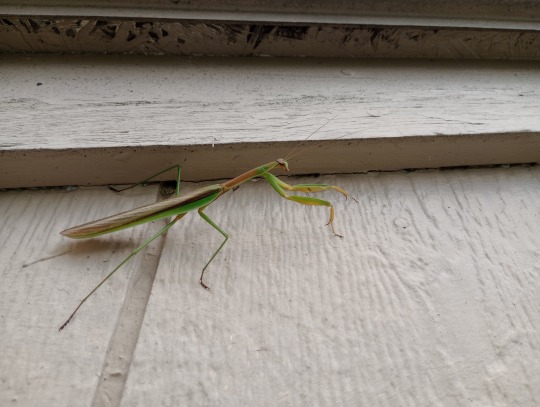
a male Tenodera sinensis. adult US Tenodera are recognizable by the thick green stripe on the forewings that both brown and green morphs have; Mantis are either all green or all brown. T. sinensis is the largest species of nonnative mantis, and has a yellow dot between its forelegs. T. angustipennis is more slender, with a smaller green stripe, and has an orange dot between its forelegs.
Mantis also have black spots on the foreleg coxae, usually with white in the center like an eyespot.
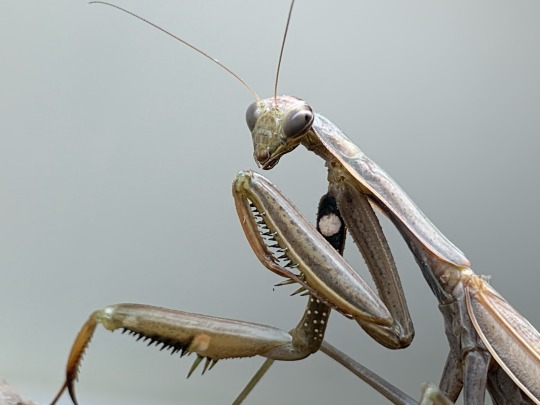
69 notes
·
View notes
Text
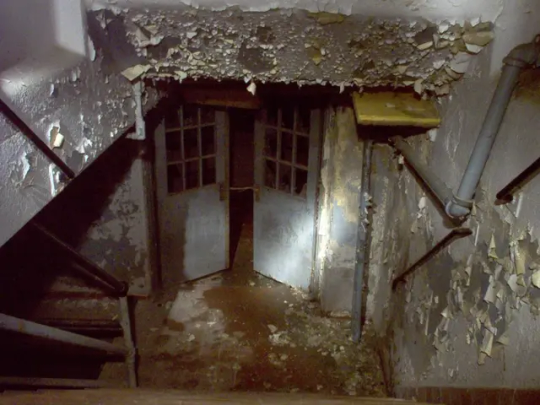
13 Terrifying True Tales of Abandoned Asylums and Hospitals
Could there be anything more nightmare-inducing than an abandoned lunatic asylum? Not really. Haunted hospitals and insane asylum stories are the stuff of legends, often places of trauma and death it’s hardly surprising when they become a source for a ghostly tale or two.
Here are 13 frightening ghost stories of abandoned asylums and hospitals as shared by urban explorers and security guards
1. The Old Operating Room
Abandoned hospital in my town is very active. It was also used in the movie Bone Yard. When they blew the hospital up in the movie apparently they actually burned some of it. So they abandoned it completely. Still have tables, desks, chairs, boxes and boxes of files. Not sure if half of the sightings are squatters or paranormal but friend of mine snuck in and had a series of lights turning off and on that lead him (and his friends) to an operation room. The light turned off and they panicked and ran out. They also had batteries drained and could only make out the light outside through the roof access hatch they used.
Also had a co-worker who worked at a renovated sanatorium turned tree farm. The basement had screams and grabbings. Still had an attendance board where the old nurses still signed in for duty even though there wasn’t any chalk. Some other things, that I cannot remember, happened that led him to quit.
2. 911 Calls
I’m a nurse that worked at a psychiatric hospital for five years. That place was haunted as shit. Police would call us in the middle of the night saying some little girl who identified herself as Satana was calling 911 from a certain extension in the hospital.
That extension? The arts and crafts room. Nobody goes there at night. Nobody. I assure you. Yet there’s obviously something there. And it calls 911 a lot.
Lots of other stories from that place but that’s the craziest, creepiest one.
3. The Power Was Still On
When I was a teenager (20+ years ago) my friends and I trespassed on a condemned insane asylum called Eloise in Southeastern Michigan.
The worst thing wasn’t that it was at night with shitty flashlights, the dirty patient records scattered on the floor, the broken furniture, the torn up walls, the leaking water pipes or the huge fungal bloom from the leaking water. The worst part was finding a tunnel and following it to a place inside where power was still on. There was a light, an ominous looking double doors and an active security camera.
It was like why is this here? What’s going on?
Later on, I found out that the asylum and a nearby hospital were connected. However, the wikipedia page says it closed in 1984 but we were there several years after that.
I think I saved one of the patient records somewhere.
4. The Footsteps Above
I was the night watchman at an abandoned mental hospital turned state park for a summer in college. The only creepy thing that happened was one night I was with one of the state park police and we saw flashlights in one of the buildings. Kids constantly broke in and other people broke in to gut the old buildings of any copper they could find.
So as I was saying one night we saw flashlights moving around so we went in. The officer pulled her gun and flashlight and in we went. We could her footsteps on the floor above us and we slowly and quietly went upstairs. We checked every room and found nothing. Then we heard footsteps above us again. This happened for a few floors until we were on the top floor below the roof. We heard footsteps up on the roof so we went up there. Still nothing. We never found anyone or any indication that anyone had been there. It was friggin creepy.
5. Things Moved In The Night
There is this abandoned mental hospital in my town called Prudhoe hospital which is sort of the scary place kids go to show bravado. It’s surrounded by woods so obviously you hear lots about it.
You hear lots of stories from people after it was abandoned but the spookiest things come from when it was still in service.
My mam worked at an auxiliary nurse there for years and she said at night the crippled kids who couldn’t move due to severe diseases and birth defects would somehow get out of there cribs and into the middle of the floor on the wards. Whatever was doing this would also go around and remove blankets from all the patients and again pile them in the center of the room.
Eventually security was hired believing it was someone getting into the hospital at night and doing all these things to scare people or to just be trouble.
However even with security they never found out who was doing these things at night.
6. The Praying Nun
My dad worked at a mental hospital that used to be connected to an abandoned nun’s home by underground passage. He says that one night he was walking down there when he saw a praying nun. He walked by her and said hello. She did not acknowledge him.
My dad does not believe in ghosts but he says there was a nun down there that night.
7. The Séance
I had a guy I worked with who used to be a hospital wardsman. He was telling me about a night where a few young nurses and some of the other wardsmen were going to hang around late one night and conduct a seance in one of the older unused wards.
Anyway, he agreed and one night they did it. He didn’t believe a word of it but took part for fun. He said they called through one spirit who identified himself as ‘Nigel’ and when asked if he was good or evil the planchette flicked straight to evil. At this stage my mate assumed people were pushing it and just laughed it off. After some more unintelligible responses the planchette started going ballistic, flicking from one letter to the next. Someone asked the scribe what it was saying and this guy goes ‘I can’t make it out….errrr hang on it’s saying ‘KILLBABYCASSYKILLBABYCASSYKILL??? Is it saying Cassy Kill Baby?’ One of the female nurses ran screaming and absolutely lost it, one of the girls running to help her.
Turns out this girl was named Cassy and she had had a secret abortion two weeks prior. She had told no one about the pregnancy, not even her boyfriend.
8. The Late Night Walk
A few years ago my cousin and his friends were walking in the woods outside of Fredrick and found an old abandoned Insane Asylum. It was all boarded up, grown over, dark, dusty; it looked like it was out of a movie.
Obviously my cousin and his friends broke in to look around.
The first room they went into was full of file cabinets holdings records of all the patients that used to be there, and they found a bunch of really creepy ass pictures. Another room was nothing but concrete and drains on the floor. The walls had chains attached to them, and in the center of the room was a table that had what looked like torture tools and beating sticks. Other than that they didn’t really see anything but they claim to have heard talking, footsteps, and demented giggling.
9. The Little Boy
I work night shift as a CNA in a hospital. I had a patient last year. He was in his 50s, totally with it. I had him for a week or two and never showed signs of confusion at night or otherwise. He liked to keep his door open at all times and he was in a room close to the nurse’s station, so he saw myself and plenty other staff walk by throughout the night.
One night, around 2:30 in the morning, he sees me walking by and calls me into his room.
“Is that your son or something”?
“Who”?, I asked.
“The little boy that’s been following you all night”.
I proceeded to ask what he looked like, because I could not see him. He said he looked to be about 7 years old, with short, dark hair and a baseball cap. Both of us were freaked out about the situation and he requested to keep his lights on after that.
I’m getting chills thinking about it now
10. What was running around with us in that asylum?
It was about 16 years ago (I’m old now haha), when I lived in Topeka, Kansas. Now some of you will know what I’ll be talking about already, but for those of you who don’t, keep reading. I was a keen urban explorer, there was just something thrilling about breaking into abandoned buildings and exploring them. I had always known about the Topeka State Hospital due to the numerous ‘haunted’ stories around it, but I had never really thought about exploring it. My friend of mine, Reece, was also an avid urban explorer, and one night he suggested to me that we go check it out at night. Not believing in ghosts or scary stories as such, I instantly agreed to go. We got our bags ready with torches, phones and a snack or two (you have to travel light) and waited for sunset.
On arriving it was already pitch black, there were no lights as the place had been closed since 1990, so we flipped on our torches and crunched our way up the gravel to the front entrance. It was locked, as we expected, so we made our way around the red bricked exterior, looking for a way in. About halfway around, we came across a boarded up window. I offered Reece a parting glance and a slight nod of his head indicated we were thinking along the same idea. I braced my shoulder and bashed into the window. The sound echoed around the empty halls and the surrounding forest for what seemed ages. A second bash proved successful as the wood splintered and fell to the ground in a large bang. Reece whispered in my ear ‘honestly if nobody comes after us after that then we’re safe’.
I climbed in through the small gap, before lending a hand to Reece to do the same. Once we were inside, we flipped on our torches and were met with a view of peeling wallpaper and a heavy, musty smell. We crunched our way through the first room, just enjoying the rush of adrenaline as we tiptoed our way through the halls before we heard footsteps running in the room above us. Immediately my heart skipped a beat and I glanced at Reece who put up his finger to his lips and indicated that we should turn our torches off. In the pitch black, I must admit I started getting scared, but I carried on and we made our way up to the second floor to see who was with us in the house. After three minutes of looking, we turned up empty and were about to leave when we heard more footsteps running, and this time we were sure that we weren’t just hearing things as a light rain of dust fell from the room. We immediately thought we were being pranked, so we ran up to the third floor in hope to catch this person. But once again, it turned up empty. We had had enough and just started going down when we heard a door creak from above. This was it, our chance; we sprinted up, barged though the door and we ended up on the roof of the Asylum. Empty. Just then we heard a door being slammed from the floor beneath us and some guttural whispering noise.
11. She Was Right Behind Me
A friend of mine was diagnosed with cystic fibrosis and was so upset over it that she made a suicide attempt. She landed in the mental health wing of the big hospital and I went to visit her one evening. Had a hell of a time finding the right place and felt like I’d walked through miles of increasingly decrepit hospital before I found the right wing. Went through a set of double doors and found myself staring down a dimly lit hallway with an incredibly creepy, weathered-looking old lady in a housecoat standing right in the middle of it.
I walked down the hallway nervously, not taking my eyes off of the old woman. She didn’t take her eyes off me, either. I flinched as I walked by her, but she didn’t move. Ten feet beyond her was the doorway to the waiting room of the ward I was looking for. I breathed a sigh of relief as I reached the doors, then glanced over my shoulder to see if the woman had moved.
She was right behind me, staring into my face. I don’t know how she managed to silently cover that ten feet just as fast as I had moved, but she did.
12. The Night Shift
A few years back, prior to sworn LEO, I worked as a Security Guard at a hospital. Sounds cool and it was, except for the fact it was 9pm to 7am, I worked alone and the hospital I guarded was abandoned.
A year prior, the hospital built a brand new facility to replace their five story tall, 1900’s building. When the employees and patients left, they left everything in place. It looked like the people just disappeared in a hurry. Partially full coffee mugs, uniforms hanging on coat racks, wheelchairs in the halls, everything as it was, with a good coating of dust.
I was always a 3rd shift kind of person, I don’t get night ‘jitters’ or scare easily. But this place could do it to the best of em. Every night I would walk (or ride a wheelchair) through the halls that were supposed to be empty/unused. Every night I would end up having to close doors and re-lock them. I would walk one floor, move up to the next, and continue on.
I got a little shaky when an hour after already walking a hallway, I would have to turn off the same hall lights and close the same doors AGAIN in the building. Or when I would be walking a hall and then I would hear footsteps on the floor above me, doors opening and closing, elevators moving from floor to floor, phones ringing, nurse call lights going on, etc.
There were only 3 times I got the “I hate this sh*t” feeling. 1st time I was checking offices on the 4th floor. There was a light on in a locked hallway (no surprise). This hallway hadn’t been renovated since the place was built, short of electricity, so everything was from the 1920’s. Unlock the door, flip the lights, walk out, re-lock the door, and turn to leave. Behind me I hear the “flip” of a light switch. Through the frosted glass I see the lights went back on. I left the hallway alone that night.
2nd time was riding an elevator between floors. I was taking the elevator to the top floor, when at about #4 of #5 floors, I hear laughing and muffled talking. It kept getting louder as it got higher. Elevator makes it to #5, doors swing open, and absolute silence. Of course, every light was on on the floor, even in the patient rooms. I checked high and low, not a single living and breathing person in that place except for me.
3rd, and worst of all, was just an average night. I’m on the lower level locking a door in a corridor. The door had a glass middle but on the backside it was covered by white tape. The room it led to it was dark and the hallway a few feet behind me was partially lit, so the glass acted like a perfect mirror. Everything normal, key in, lock clicks, turning the key. When behind me I see the full outline of a person walk past me in the hallway. Clear as day, just a full shadow of a person walk past. I froze only for about a second, and then ran into the hall after the supposed ‘person’. No one, just silence.
Awesome gig, but after a year it felt like I should’ve been an exorcist with all this stuff happening. The other guards that worked on the days opposite to mine had the same stuff happen, except they always saw nuns walking into rooms just outside of an old rectory/chapel on the 3rd floor. Better nuns than something else I guess.
13. The Ambulance
One fall afternoon a buddy of mine and I decided to visit a massive abandoned mental hospital to take some photos. We’re talking 11 wards of two floors and a basement all connected from ward to ward. In total it must be 200-300 linear yards of winding connecting hallways on each floor. You get in and see open cell after cell after cell, peeling paint and graffiti all over the walls. We check the basement, walk through the majority of the wards and are now at ward 8.
We got there early in the afternoon maybe around 2 or 3 because we were too pansy to go at night. Mind you, we’ve heard there are cult gatherings and people have been known to stumble across the occasional hobo on their visits, so we came equipped with a couple of kershaw’s, praying not to get in some fucking knife fight. But, shit, its better to have one than not right? So. Ward 8.
We’re in a connecting hallway with a couple of wired off windows that can see outside, and my buddy say’s “yo, yo get away from the window”. We look outside and there’s an ambulance, no lights on, creeping slowly around the hospital. He must’ve been going at about 5 miles per hour, so we thought dammit, if there’s an ambulance, there must be a cop somewhere. The ambulance disappears from our line of sight from the windows and must’ve driven around all of the other wards at the same pace because a minute or so later, we see the ambulance pass right alongside the hallway we were standing in. Still fucking creeping. Thank god, the ambulance drives away, so we think, okay shit that was just a scare, there’s no cops around, let’s just keep on going.
We slowly advance for another 3 or so minutes and come across a huge lobby, probably the cafeteria and start taking a couple shots of the collapsed ceiling. we walk a bit further into the cafeteria and are by the windows again. The see the ambulance again! Creeping, just like last time, along the perimeter of the building. We hide from the windows hoping that we weren’t seen as the cafeteria is full of windows to the exterior. This time, we start to shit ourselves a little bit more.
He disappears from our line of view again, and of course, comes across the other side of the building, circling it just like last time, 5 mph, just like last time. This time, however, he doesn’t go leave the complex, he drives up to ward 11, the last ward and parks in a cove with no exit that was right out of our line of sight. We hear the door open and close and another door open and close. We were able to tell that there was only one person in the ambulance from the first time we sighted it. What the fuck is going on?? Was this guy here to shoot up? seemed like a bad place for a trip. Was he here for some sort of drug deal? Or was he back to “play” with us because he saw us on his last ride around?
We stay put, and at this point, we’re maybe 50 yards from ward 11 and 100-200 yards from the exit that we came in from. We know of no other exits except for the ones at each end. Trying to be as quiet as possible, we begin to hear footsteps on the floor above us. seconds later the footsteps turn into running. Towards us! NOPE, we both instantly go for our knives and begin to book the fuck out of there. The fastest 200 yard dash I will do to this day.
We finally reach the exit. We’re safe goddammit we’re safe. We continue to book it a ways out of the hospital till we’re on the path that gets us back to our car. On the way back to the little lot with my buddies car we see there’s a truck, one of those ford rangler types parked right next to my buddies car. We get maybe 50 yards away from it when he turns the car on and starts driving down the road towards us. In the car is another middle aged man, looked real real sketchy. He drives past and thats the last we saw of both of them.
I never got a shot of the ambulance as I was too scared to go near the windows and that my flash would go off, but I did get a shot of the rangler in the parking lot.
What the fuck were these guys doing there? An ambulance??? I’d love to hear what you guys come up with, we’ve been playing it over in our heads for quite a while now…
#13 Terrifying True Tales of Abandoned Asylums and Hospitals#ghost and hauntings#ghost and spirits#paranormal#haunted locations#haunted salem#myhauntedsalem#shared stories
41 notes
·
View notes
Note
When I was a kid, I heard not to call indigenous people Eskimo because it's derogatory. It means something to the effect of "eater of raw meat". "Inuit" was recommended instead.
As an adult, I've heard that they'd prefer Eskimo to Inuit because the former is a general term, whereas the latter is a specific tribe (and they hate getting confused with other tribes).
Inuit and Ojibwe are two tribes I've heard associated with Canada. I'd be interested in whatever other info (if any) you could dump on me.
Eskimo actually comes from the French word esquimaux, meaning one who nets snowshoes.
You are correct, Inuit is not the preferred term, while one group does use the term the hundreds of others do not.
To list a few terms used by the tribes aside from Inuit there is Inuvialuit, Inuinnaat, Inupiat, Yupiit, Cupiit, Yupiget, Yupik, and Sugpiat, but they can all be grouped under the term Eskimo as despite their varying cultures and traditions, all use snowshoes.
The Ojibwe live in both the United States and Canada and occupy land around the entire Great Lakes, including in Minnesota, North Dakota, Wisconsin, Michigan, and Ontario.
It'll be hard to name all of the tribes in Canada off the top of my head...
There are more than 630 tribal communities in Canada, which represent more than 50 Nations and 50 languages, but from the top of my head I can name the;
The Cree are one of the largest tribes in Canada. Their territory covers a vast area of Western Canada from the Hudson-James Bay region to the foot of the Rocky Mountains, and in Alberta between the North banks of the North Saskatchewan River to Fort Chipewyan.
The Dene have historically inhabited central and northwestern Canada in an area known as Denendeh, meaning “the Creator's Spirit flows through this Land” or “Land of the People.” This region includes the Mackenzie River Valley and the Barren Grounds in the Northwest Territories.
The Haida People have occupied Haida Gwaii since time immemorial. Their traditional territory encompasses parts of southern Alaska, the archipelago of Haida Gwaii and its surrounding waters.
The Niitsitapi, also known as the Blackfoot or Blackfeet Indians, reside in the Great Plains of Montana and the Canadian provinces of Alberta and Saskatchewan. Originally, only one of the Niitsitapi tribes was called Blackfoot or Siksika.
The majority of Métis live in the western provinces and Ontario, they are the product of tribal marriages with the French, they were rejected by both the tribes and the French and so formed their own tribe.
The Mohawk people are the most easterly section of the Iroquois Confederacy. They are an Iroquoian-speaking Indigenous people of North America, with communities in southeastern Canada and northern New York State, primarily around Lake Ontario and the St. Lawrence River.
The Nootka are a people who live on what is now the southwest coast of Vancouver Island, and on Cape Flattery, and the northwest tip of the state of Washington.
The Huron-Wendat are one of Québec's most urbanized Indigenous nations. Their cousins the Wyandot moved to Michigan, Ohio, Kansas, and Oklahoma.
Mi'kmaq communities are located predominantly in Nova Scotia and New Brunswick, but with a significant presence in Quebec, Newfoundland, Maine and the Boston area.
The Nuxalk people call themselves the Nuxalkmc. Traditional Nuxalk territory is the central coast of British Columbia, from the mouth of the Bella Coola River inland along the Bella Coola Valley and nearby inlets and channels.
Also, the Canadian Ojibwe tribes are the same as the American Chippewa tribes, like I mean they are the exact same tribe just called different names.
80 notes
·
View notes
Text
Kamala/ James Arthur Harris

James Arthur “Kamala” Harris was a professional wrestler best known for his professional wrestling persona, Kamala, a fictional Ugandan giant. Harris was born on May 28, 1950, to Jessie Harris and Betsy Mosely in Senatobia, Mississippi. He had four sisters as well. Harris grew up in Coldwater, Mississippi where his family owned a furniture store. When he was four years old, his father was murdered after a dice game. Growing up, he worked as a sharecropper to help provide for the family. Harris dropout out of high school in the ninth grade and became a burglar.
In 1967, on the advice of police, Harris left Mississippi and moved to Florida where he worked a truck driver and fruit picker. He next moved to Benton Harbor, Michigan where he met a professional wrestler Bobo Brazil who became his trainer. In 1978, Harris made his professional wrestling debut as “Sugar Bear” Harris. One year later, in 1979 he won his first professional wrestling championship in the National Wrestling Association (NWA) Tri-State Tag Team competition with wrestler Oki Shikina. In 1980 he joined Southeastern Championship Wrestling as “Bad News” Harris and later that year won its championship. In 1982, Harris joined the Continental Wrestling Association (CWA) after being offer by a job by promoter Jerry O’Neal “The King” Lawler.
While wrestling for CWA, Lawler and another wrestling promoter, Jerry Winston Jarret, created a new wrestling character for Harris. This character, named Kamala, was a stereotypical Ugandan headhunter with face and body painting who was supposed to be the bodyguard of former President of Uganda Idi Amin. Harris then joined Mid-South Wrestling owned by promoter William Harris and remained with the organization until 1986.
Harris wrestled with other wrestling organizations during his career including World Class Championship Wrestling and the World Wrestling Federation (now World Wrestling Entertainment, WWE), and World Championship Wrestling before retiring in 2010 at the age of 60.
Despite his long successful wrestling career, Harris had numerous personal and health related issues. In 2011, had his left leg amputated below the knee due to complications from high blood pressure and diabetes. A year later, his right leg was also amputated below the knee. As a result of the amputations, a charity fund was set up to help with his financial needs.
In 2016, Harris was part of a class action lawsuit filed against World Wrestling Entertainment claiming that wrestlers received traumatic brain injuries during their time with WWE. Unfortunately for Harris and other wrestlers, the lawsuit was dismissed by Judge Vanessa Lynne Bryant in 2018.
Harris was married twice during his lifetime, first to Clara Freeman. That marriage ended in divorce. He later married Emmer Jean Bradley and that marriage lasted until his death. He was also father six children, five daughters and one son.
In 2017, Harris underwent lifesaving emergency surgery to clear fluid from around his heart and lungs. His health problems continued. He was hospitalized on August 5, 2020, after testing positive from COVID-19 during the pandemic in Mississippi. Four days later, on August 9, Harris died from complications from diabetes and COVID-19 in Oxford, Mississippi. He was 70.
https://www.blackpast.org/african-american-history/people-african-american-history/kamala-james-arthur-harris-1950-2020/
9 notes
·
View notes
Text
Y'ALL I JUST SAW THE NORTHERN LIGHTS FOR THE FIRST TIME EVER




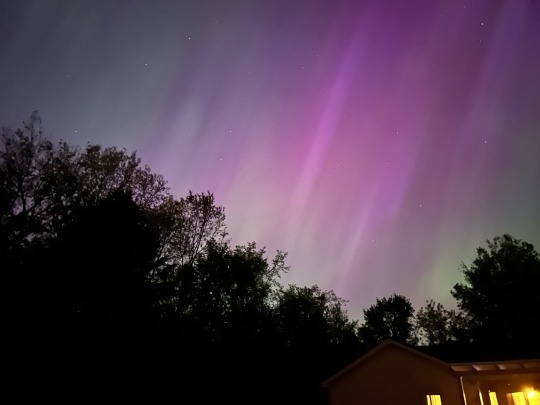

I am like so hyped rn cuz I live in southeastern Michigan near Detroit and northern lights aren't supposed to be this far south
All of these were taken by my iPhone 14 camera with the long exposure thingy in my back yard
#jaybrd#jaybrd webtoons#northern lights#solar flare#rare#weather#michigan#detroit#night#night sky#once in a lifetime#photography#aurore beaureal#aurora
5 notes
·
View notes
Text
How to Identify American Holly
Click here to learn more about the How to Identify article series.
Name: American Holly (Ilex opaca)
Range and typical habitat(s): Typically southeastern United States, from eastern Texas to the Atlantic coast, southern Missouri, and central Florida to scattered portions of New England. iNaturalist observations also place it in portions of Michigan, Illinois, Ohio, and Oklahoma, showing some expansion compared to the 2014 BONAP map, so its range may be expanding in response to climate change. In most of its range it is an understory tree growing in the shade of larger species. However, in Florida’s scrub habitat it grows as a shrub.

Photo by Derek Ramsay, GNU FDL 1.2
Distinguishing physical characteristics (size, colors, overall shapes, detail shapes): At first glance American holly looks quite similar to the European holly (Ilex aquifolium) so commonly used got holiday decorations (more about the differences between the two below.) It has medium to dark green oval-shaped leaves, sometimes with a yellowish tint, whose margins (edges) have concave curves between sharp points that are regularly spaced; large leaves may reach three inches long.

Photo by Famartin, CCA-SA-4.0-INTL
The American holly’s leaves have a leathery, stiff texture, and may appear waxy, and the underside is paler, often yellow in color. Each leaf has a central vein (midrib) that is depressed, appearing almost like a deep crease. Thinner veins branch off of both sides of the midrib. Some leaves may display smooth margins instead of the more typically spiky ones, especially when they are high enough to be out of the reach of browsing herbivores like deer.

The foliage stays green throughout the year rather than being shed in fall; a given leaf may stay on the tree for up to three years before being displaced by a new replacement leaf. The leaves grow in an alternate pattern along a twig, with each leaf growing a little further along the twig than the last. The tree’s branches and trunk are covered in pale gray bark that is relatively smooth, but may have horizontal and vertical striations, along with various nodes and bumps, and might also play host to white patches of microlichen colonies. Other lichens, as well as mosses, also may add color to the American holly’s bark.
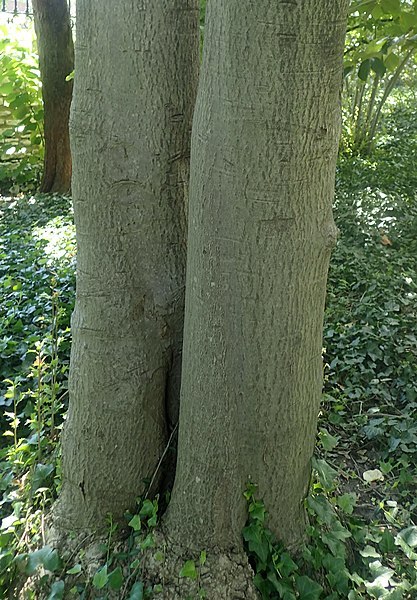
Photo by Krzysztof Ziarnek, CCA-SA-4.0-INTL
An exceptional specimen of American holly can reach almost 100 feet tall when mature, though it grows slowly. Such large trees are generally a century or more old, and the oldest on record was just a few years shy of 150.
The flowers of American holly are small (1/2″ or less across) with green centers and four (sometimes six) white petals that are broad with a rounded end, and whose tips curve back toward the plant. They grow in clusters of several flowers sprouting from one spot. American holly is dioecious, meaning that there are female and male plants; the males tend to reach sexual maturity a few years earlier than the females, but they all are generally reproducing by the age of ten.

When fertilized by insects the female flowers then turn into the well-known red berries. Technically these are drupes rather than true berries, with four seeds apiece, and while they start out green they ripen to a bright red. The berries are popular with birds like cedar waxwings (Bombycilla cedrorum), but are toxic to humans and our pets.

Photo by Douglas Goldman, CCA-SA-4.0
Other organisms it could be confused with and how to tell the difference: Due to their similarity, American holly and European holly may easily be confused at first glance, and both prefer the understory of a forest. However, the European species does not grow as large. The leaves of European holly are darker and have a glossier appearance; the edges may also be more warped where those of American holly lie comparatively flat. Moreover, European holly grows more commonly along the west coast of North America, and is more sparse throughout American holly’s native range, especially outside of cultivated spaces.

European holly (Ilex aquifolium)
Yaupon holly (Ilex vomitoria) is another species native to the southeastern North America, particularly the Gulf Coast states and the southern third of the Atlantic coast. It is a much smaller shrub that rarely exceeds thirty feet tall, and its leaves are round with serrated or scalloped edges rather than the pointed margins of American holly. The petals of the flowers may not curve as much as on American holly.

Yaupon holly (Ilex vomitoria)
Dahoon holly (Ilex cassine) also grows in the extreme southeastern United States, from Louisiana to the southern tip of North Carolina, and primarily along the coastline except in Florida where it can be found across much of the peninsula. Its leaves are longer and more slender than those of American holly, and the margins are almost entirely smooth except for a series of very small spikes.

Dahoon holly (Ilex cassine). Photo by Douglas Goldman, CCA-SA-4.0
Possumhaw (Ilex decidua) has long, slender leaves with a gently pointed tip and serrated edges. This deciduous plant drops its leaves in fall, unlike the evergreen American holly.

Possumhaw (Ilex decidua)
There are other plants that have similar leaves to American holly but that grow out of its range, such as the various species of Oregon grape (Mahonia spp.) in the Pacific Northwest, and holm oak (Quercus ilex), for which the genus Ilex was originally named.
Further reading:
USDA: American Holly
North Carolina Extension Gardener Plant Toolbox: Ilex opaca
Missouri Botanical Garden Plant Finder: Ilex opaca
Native Plant Trust: Ilex opaca – American holly
University of Connecticut Plant Database: Ilex opaca
Did you enjoy this post? Consider taking one of my online foraging and natural history classes or hiring me for a guided nature tour, checking out my other articles, or picking up a paperback or ebook I’ve written! You can even buy me a coffee here!
#holly#American holly#North America#native plants#Ilex#shrubs#plants#plant identification#nature identification#botany#trees#ecology#conservation#biodiversity#long post#nature#Yule#Christmas#holidays#scicomm
10 notes
·
View notes
Text

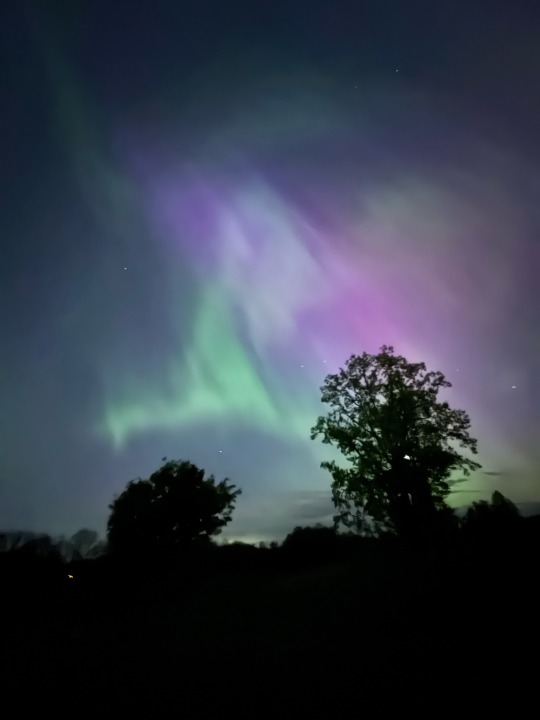
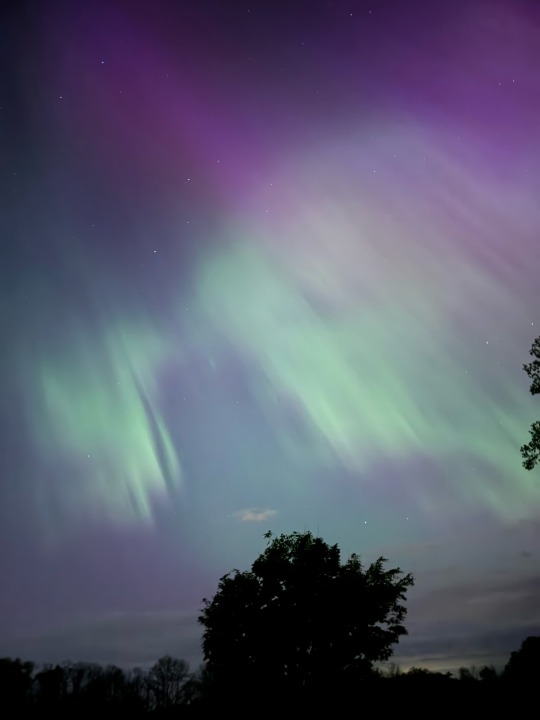
the northern lights visible from southeastern michigan :)
#once in a lifetime experience. genuinely so amazing#some coworkers texted and were like the northern lights are visible in michigan right now!#so my boyfriend and i pulled on our hats and coats and RAN putside#and it was so worth it!!!!#:)))#random thoughts with grace
5 notes
·
View notes
Text
Deadline Detroit | Slavery is Detroit's big, bad secret. Why don't we know anything about it?

Metro Detroiters love to celebrate their local history, especially when it involves the noble, magnificent and world-class chapters of the past: The auto industry. Motown Records. The Underground Railroad. Diego Rivera. Coney Islands.
On the other hand, local history has its crazy uncles. Those are chapters that might be fascinating and important, but they are hidden in the back room and rarely talked about. Henry Ford’s anti-Semitism, taking land from the Indians, the Free Press’ 19th Century racism and the auto companies’ early abuse of workers come to mind.
Then there is the granddaddy of all forgotten local history. The subject no one talks about, virtually ever. The most neglected topic of all.
youtube
Slavery.
Slavery in Detroit has remained an enormous secret. It is an essential chapter in Detroit’s 311-year story, but it has been pushed back into archives and covered up by decades of neglect and denial. Few people, even well-informed college graduates, know that slavery played a key role in the growth of Detroit, and wealthy Detroiters owned slaves for the first 120 years of the city's existence.
When metro Detroiters talk about slavery, they talk about black men and women picking cotton in Georgia and Mississippi because that is what students in southeastern Michigan learn in school.
Yet slavery is very much homegrown. What has been called the “national sin” is also Detroit’s sin. It is the origin of our racial crisis, our peculiar institution, our “necessary evil.” Slavery belongs to Detroit just like slavery belongs to Charleston, Monticello and New Orleans.
Many roads, schools and communities across southeast Michigan carry the names of old, prominent families that owned slaves: Macomb, Campau; Beaubien; McDougall; Abbott; Brush; Cass; Hamtramck; Gouin; Meldrum; Dequindre; Beaufait; Groesbeck; Livernois and Rivard, among many others.
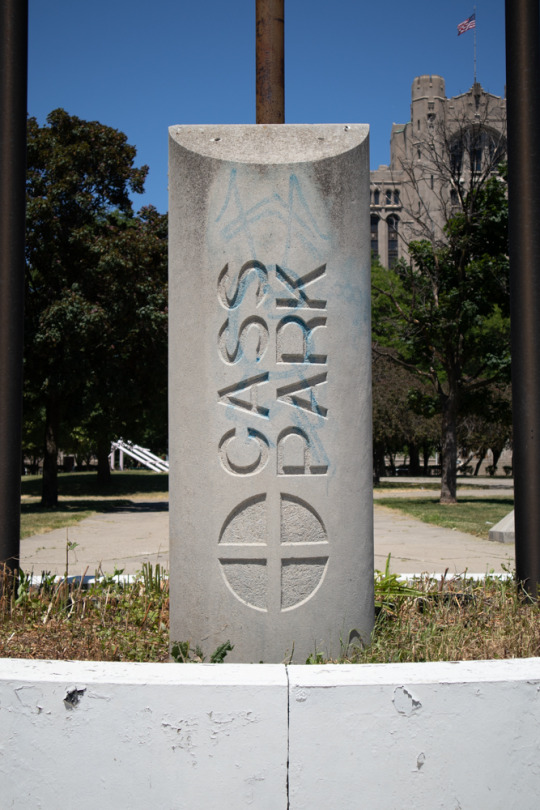
Detroit’s first mayor, John R. Williams, the namesake of two streets in Detroit – John R and Williams – owned slaves. The Catholic Church in Detroit was heavily involved in slavery – priests owned slaves and baptized them, and at least one slave worked on the construction of Ste. Anne’s Church around 1800. The men who funded the Free Press when it was founded in 1831 were ex-slave owners, and the paper supported slavery during the national debate before the Civil War.
The work of slaves helped build Detroit. And just like in the South, slavery in Detroit was reinforced by violence. Slaves worked without any pay for their entire lives, under threat of the lash and death.
Owners used their power over slaves to steal their labor and enrich themselves. Slaves arrived in Detroit stripped of their identity, culture, family and often their name. They were frequently maimed from torture.
Slaves died, often young, and were buried in graveyards that were soon forgotten, and then paved over by later generations of Detroiters, and their bones remain underfoot in America’s blackest big city, and their stories continue to be unknown in a region where race always has been a consuming issue.
Slavery was as much a part of early Detroit as the fur trade. Most residents who could afford slaves owned them during Detroit’s French, British and early American periods, from the city’s founding in 1701 to the second decade of the 19th Century. In 1750, for example, toward the end of the French regime, more than 25 percent of Detroit residents kept slaves.
“Not surprisingly, Detroit’s slaveholders came from the wealthiest segment of French society and produced a disproportionate amount of the village’s grain and livestock,” writes Brett Rushforth in “Bonds of Alliance,” a new book about slavery in Quebec and the Great lakes area in the 17th and 18th centuries.
Rushforth’s book touches upon the subject of slavery in Detroit, and in so doing he helps raise the veil on the city’s hidden history. Another academic, the University of Michigan’s Tiya Miles, has begun researching the subject, and earlier this year she told NPR’s Michel Martin that slavery “had a multilayered aspect in Detroit.”
There are almost no physical reminders of slavery left in Detroit. But one artifact that remains is a scarred and cracked account book that has yellowed and brittle pages. It sits in storage in the Burton Historical Collection at the Detroit Public Library. The book belonged to William Macomb, the richest person in Detroit when he died in 1796.
Macomb owned Grosse Ile and Belle Isle and several houses and page after page of livestock, tools and furniture. Macomb also owned people. Listed prominently near the front of the book along with things like shovel tongs, saddle bags and goats, are the names of, or references to, 26 human beings: Scipio, Tom, Guy, Charlie… Only one, Jim Girty, had a family name. Together, the slaves’ total value was listed as 1,655 pounds in New York currency.

In his will, Macomb wrote: “I give and bequeath to my loving wife, Mrs. Sarah Macomb, for her own use, all my moveable estate wheresoever…my slaves, cattle, household furniture, books, plates, linen, carriages and my utensils of husbandry.”
I examined that book last week, with a librarian and photographer. It is stark. We acknowledged that it felt strange to look at a simple page with lovely penmanship that represents a national horror involving so much human suffering.
Detroit’s history of slavery is complicated by the fact that African Americans were not the only people held in captivity. Native Americans were also enslaved here, especially during the early decades of the 18th Century when the French ran Detroit.
Indian slavery pre-dated the arrival of Europeans, and it was a very different system than the form of black slavery that Europeans brought to North America. Indians did not consider slaves property, and in native culture slaves possessed symbolic value, and were used as gifts during trade and negotiations, and to take the place of dead warriors.
Eventually, though, Indian slavery mixed with European slavery and produced a hybrid form of bondage that played a major role in relations among Indians and Europeans in Detroit throughout the 18th Century.
Slavery was important, for example, in the interaction between men and women. Traders in Detroit’s early days used female Indian slaves as backcountry wives, both for companionship and as a way to ingratiate themselves with the women’s relatives, which enhanced the traders’ ability to do business with the Indians.
During the British era, one of Detroit’s most successful traders was John Askin, who had three children with an Ottawa woman named Monette, a slave he owned and later freed. Askin was known for his aggressive business tactics, including plying Indians with alcohol. His papers, also preserved at the Burton Collection, show he bought and sold several native and black slaves during his career.
“Rum and sex paved the way for Askin’s success,” wrote historian E.A.S. Demers.
“Sexual violence permeated the slave experience” in the Great Lakes, wrote Rushforth. Many women, he added, like Monette, eventually rose to social acceptance and freedom, but not before a “prolonged submission to what could be defined as serial rape.”
Whether male or female, life was harsh for slaves on the Detroit frontier. They generally slept on the kitchen floors of Detroiters’ homes, and the record is clear that owners did not hesitate to flog their human property when they believed discipline was called for.
Yet in slavery's scale, Detroit was not South Carolina. Detroit’s simple trading economy, small population and modest farms did not require large numbers of slaves, and slaves in Detroit generally lived in closer proximity to their owners than slaves in the south.
Slaves never exceeded 10 percent of the population in Detroit; in the south before the Civil War, slaves made up 33 percent of the population. In Detroit, Macomb was the biggest slave owner, with a couple of dozen slaves; in Virginia, Thomas Jefferson owned some 600 slaves in his lifetime. Jorge Castellanos, a former professor at Marygrove College, once wrote that Detroit was not a “slave society,” but a “society with slaves.”
Forgetting
Grosse Ile, once owned by William Macomb, is the largest island in the Detroit River. Residents have done a lot to keep alive the community’s long history. But no one knew anything about the Macomb family owning slaves until Joel Thurtell, a Detroit Free Press reporter, brought it to their attention while he was doing a story in 2007.
Denise de Beausset, who is Macomb’s great-great-great-great-great granddaughter, told Thurtell: “No, I wasn’t aware of them having slaves at all. That’s funny; you’d think there would have been talk about slaves running the farm. Nobody ever talks about it on our side. I wonder if it was out of embarrassment or it wasn’t politically correct. Nobody ever talked about slaves. I’ll be darned.”
I have two friends whose roots in Detroit go back to the French period of the early 1700s. When I told them their ancestors had owned slaves, they thought I was joking. One friend, who had researched her family’s history, was flabbergasted when I broke the news.
“NO WAY!” she said. “Wow! Nobody told me anything about that, but I guess they wouldn’t. I am just embarrassed. That’s interesting. Fascinating.”
They are hardly alone in their obliviousness. Students of local history could research Detroit’s past for years before they would stumble across evidence of slavery. Since the early 1970s, slavery in Detroit has been the subject of research by a small number of scholars, who wrote academic articles that were mostly read by other academics and advanced students.
One graduate student, Arthur Kooker, wrote his doctoral dissertation in 1941 at the University of Michigan on abolitionists in Michigan before the Civil War. In his preface, Kooker wrote about his surprise when he discovered slavery itself had existed in Michigan.
“As the work progressed one fact that seemed to require an exploration kept bobbing up,” he wrote. “Rooted deep in Michigan’s past was the very institution which had called the antislavery movement into being.”
Remembering
During the first years of the 21st Century, many Americans discovered the story of slavery in the United States, especially as it existed outside the south. Prodded by activists and historians, a number of institutions and individuals acknowledged their historic ties to slavery and other extreme racist behavior, and in many cases asked for forgiveness.

A partial list of those performing a self-examination, and often issuing an apology or moving for reconciliation, includes President Bill Clinton (on behalf of the United States); Brown University; Yale University; Harvard University; Wilmington, N.C.; New York City; Philadelphia, Miss.; Duluth, Minn.; Birmingham, Ala.; London, England.; various insurance companies; the Southern Baptist Convention; the U. S. Senate; the Hartford Courant, the Raleigh News and Observer; the Lexington, Kentucky, Herald-Leader; J.P. Morgan Chase and several other banks.
Ira Berlin, one of the nation’s foremost historians of slavery, wrote in 2006 that “slavery has a greater presence than at any time since the end of the Civil War.”
Slowly, the curtain has begun to rise across the country on slavery and other forms of historical racism. Most notably, the collective amnesia is disappearing that allowed the north to absolve itself of involvement in slavery while castigating the south. People are realizing that understanding slavery is central to understanding the origins of America itself.
Detroit’s selective memory, however, has remained intact. Almost nothing has been done to seek out the truth about the role of slavery in Detroit’s history. And that seems unfortunate in a region where the theoretical underpinning of slavery – racism – remains a paramount issue.
It’s not a happy story. It’s probably not a coincidence that we celebrate the uplifting saga of the Detroit and the Underground Railroad rather than the tremendously sad story of Detroit and human captivity. For a nation – and city -- built on the notion of freedom, to consider the idea that slavery was also a major part of the foundation is difficult and disillusioning.
But telling the truth about our history can be a start on telling the truth about today.
“Slavery is the ground zero of race relations,” Berlin has written. “There is a general, if inchoate, understanding that any attempt to address the question of race in the present must also address slavery in the past.”
► Related: Detroit Landmarks And Roadways, And The Slave Owners They Were Named For
#Detroit#michigan#Slavery is Detroit's big#bad secret. Why don't we know anything about it#slavery in Detroit#slavery in michigan#northwest ordinance 1812#michigan territories#Youtube
15 notes
·
View notes
Photo


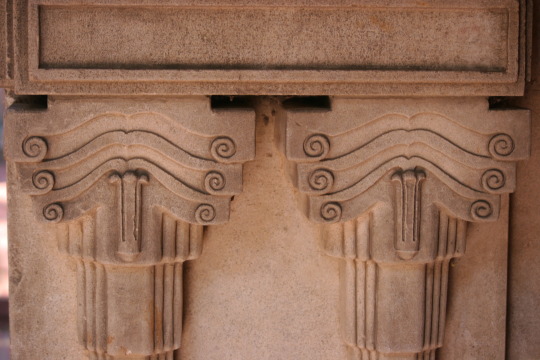


[ Northwestern & Southeastern Michigan, USA — July 2022 ]
77 notes
·
View notes
Note
"He tells of the history of Panem, the country that rose up out of the ashes of a place that was once called North America."
(THG chapter 1)
"In school, they tell us the Capitol was built in a place once called the Rockies. District 12 was in a region known as Appalachia."
(THG chapter 3)
Where do you think location of Capitol and Panem's districts exactly?
The Appalachian’s span multiple states. Where do you picture District 12?
How long between this time and Panem rise? 200 hundred years? More?
Thank you so much
@curiousnonny
Panem is comprised of the remains of North America, not the United States specifically. so I do imagine it including southern Canada and northern Mexico.
we know the Capitol is in the Rockies (Denver? Salt Lake City? somewhere entirely new? 🤔 Idk!).
D1 is out west, maybe past the Rockies. wherever there's gemstone deposits - Arizona? or maybe it’s the resurrected ruins of Las Vegas, lol
D2 is also canonically in the Rockies, maybe encircling the Capitol or at least buffering it from the eastern districts.
D3 is in Silicon Valley, lol (I have no idea)
D4 should have access to both the Pacific Ocean and the Gulf of Mexico so I imagine it as a long strip of land that spans SoCal, northern Mexico, to like southeastern Texas. this would also include the Rio Grande, for freshwater fish.
D5 utilizes Niagara Falls, placing it in western New York/southern Ontario.
D6 is in Michigan. why? because cars. 🤷🏻♀️
D7 is in the Pacific Northwest.
D8 is somewhere Midwest, maybe Illinois. however way that Bonnie and Twill would have to pass D12 to get to 13.
D9 is within the 'breadbasket' of the US, basically the Midwest. it should span the wheat and corn belt - so, Kansas.
D10 is the southern part of the Great Plains, basically Texas/Oklahoma.
D11 is at least in mainland Georgia. I think that's per Collins? even though the southeast coast would most likely be underwater if sea levels rose enough to flood parts of the country, as Katniss describes. but whatever.
D12, I picture tucked in a valley, somewhere between Kentucky and West Virginia.
D13, I wish could be the former Washington DC, as that could explain all the underground bunkers, but I am sure at this point DC has been wiped off the map, underground bunker or not. nuclear reactors + known graphite deposits would place it in New York/Ontario/Quebec region, but far enough away from D5.
and I'd say there should be at least 200 years between now (well, 2010s) and Panem. there’s so much to precede Panem, what with environmental disasters, nuclear war, and government collapse/upheaval. one day I'll find a good enough reason for someone in a fic to make the passing joke, "you just avoided world war seven," because that’s the general vibe I have of Panem’s presumed point in history.
#i spent way too much time staring at a topographical map of north america#while vehemently ignoring the stupid movie made one#hunger games#thg meta
26 notes
·
View notes
Photo


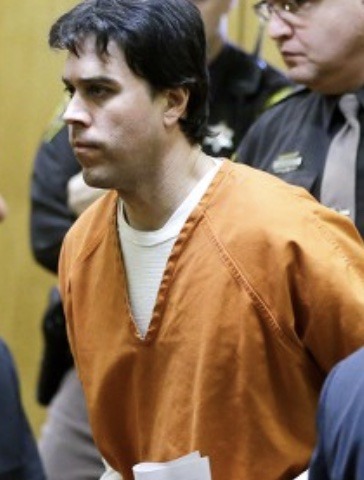
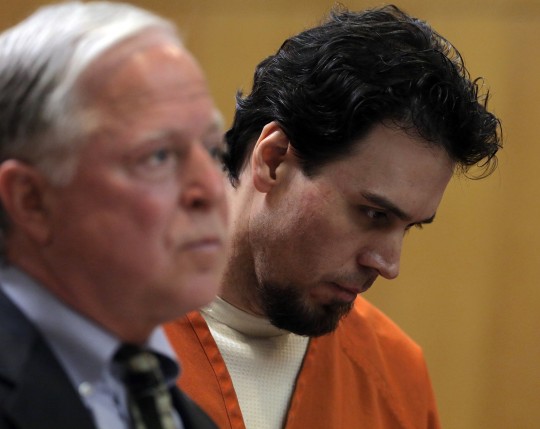




Post 850
Raulie Wayne Casteel, Michigan inmate 895859, born 1969, incarceration intake at age 44, scheduled for earliest possible release 11/05/2030, with full discharge on 11/05/2054
Assault with Great Bodily Harm other than Murder, Use of a Weapon in the Commission of a Felony, Terrorism
A man who kept a swath of southeastern Michigan on edge for weeks by shooting at two-dozen vehicles along a busy highway corridor was sentenced to 16-to-40 years in prison on a terrorism conviction.
Raulie Casteel, 44, learned his fate in Livingston County Circuit Court, where a jury found him guilty of terrorism, rejecting his claim that the shootings were the impulsive result of uncontrolled delusions and paranoia.
During the Livingston County trial, Casteel testified that he shot at the other motorists on Interstate 96 and nearby roads between Lansing and Detroit over a three-day period in October 2012. Testifying in his own defense, Casteel said he was consumed with anxiety while in traffic, most likely from undiagnosed delusions. He said he believed drivers were part of a government conspiracy against him.
Casteel said he never thought about the consequences of the shootings, only that he wanted "to send a message to back off."
Defense lawyers pleaded for an acquittal on the terrorism charge, arguing there was no premeditation as required by law, but the jury disagreed.
The terrorism charge brought by the state attorney general's office covered all the shootings in Livingston, Shiawassee, Ingham and Oakland counties. Casteel had faced 60 charges, including attempted murder, in Oakland County for shootings in Commerce Township and Wixom before pleading no contest but mentally ill to assault and firearms charges last year.
Casteel's lawyers and family members favored a plea deal, because it allows him to receive the mental health counseling he wants. Defense attorney Doug Mullkoff has said his client was diagnosed with delusional disorder, a condition associated with maintaining false, persistent beliefs despite evidence to the contrary.
Casteel is a St. Johns, Mich., native who lived in Taylorsville, Ky., before returning to Michigan in 2012 to live with his wife's family.
Police in Kentucky said they had no contact with him until June 2012 when he became agitated and complained about aircraft flying too low over his house. No one else had reported low-flying planes.
In 2020 he appealed to the Michigan Supreme Court to have his convictions quashed under the argument that he was not allowed to raise a proper insanity defense. The appeal was not successful.
3f
15 notes
·
View notes